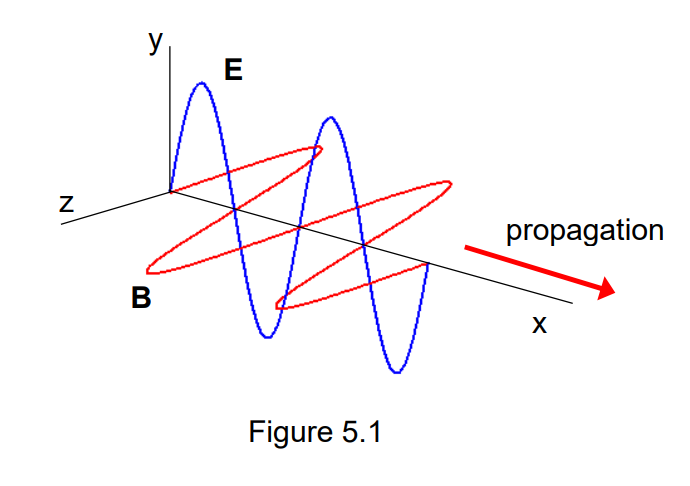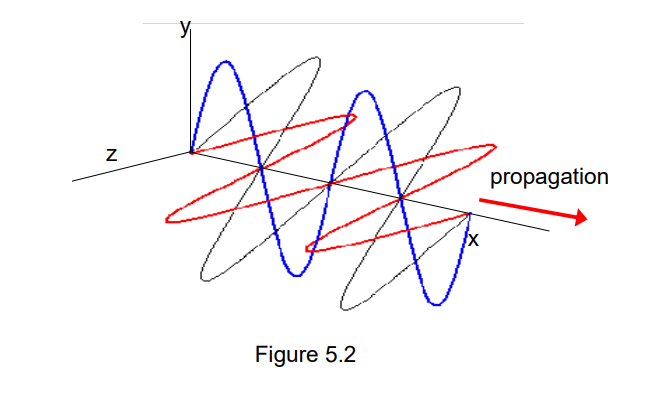PX154 - I2 - polarization

- in fig 5.1, E-field is put along the y-axis
- in reality, it can point anywhere along the y-z plane for a wave travelling along
- B-field is ignored in fig 5.2

- the components of the
-field are resolved:
- eg:
$$E_{y}= E_{0y} \cos(kx-\omega t)$$
$$E_{z}= E_{0z} \cos(kx-\omega t)$$
- fig 5.2 shows a wave oscillating atbetween - in reality, it can point anywhere along the y-z plane for a wave travelling along
- need to be able to have a phase difference between the components of the field:
- if
- if 
- magnitude of E-field is constant
- the E-field vector direction rotates around the x-axis, describing a helix
- left + right polarization for
- different textbooks use opposite conventions for left + right polarization
- this is a special case of electrical polarization: when